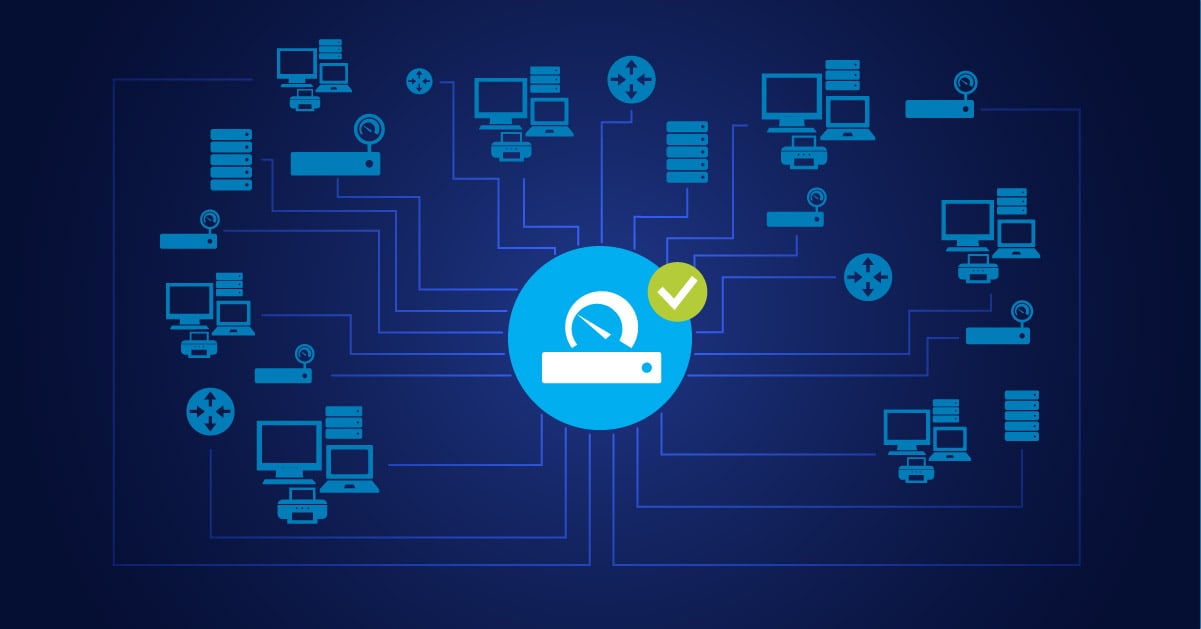Hang on, before you think, "This article will be way too technical for me...", don't skip it! I'll explain it simply!
After reading this article you will know:
- What Ansible is
- How Ansible helps you automate aspects of Paessler PRTG
- That we started a Paessler PRTG Ansible collection
- What use cases other PRTG sysadmins are implementing with Ansible
This will be amazing, so let's go!
What is Ansible and how does it work?
What could be more obvious in such a case than to ask ChatGPT about the functionality of Ansible? Our (human) Ansible expert David was quite impressed by the result!
Ansible is an open-source automation tool that helps automate various IT tasks such as configuration management, application deployment, and task automation. It uses an agentless architecture, meaning it does not require any software to be installed on the target systems. Instead, it uses SSH for communication and Python for scripting.
Ansible works by connecting to target systems and executing tasks on them. These tasks are defined in playbooks, which are written in a simple, human-readable language called YAML (or YML). Playbooks contain a series of instructions, called tasks, that Ansible uses to configure and manage target systems.
Ansible also uses modules, which are pre-built, reusable scripts that perform specific tasks. These modules can be used to execute commands, install software, manage files, and more.
Ansible uses an inventory file to define the target systems it will connect to. The inventory file is a simple text file that lists the IP addresses or hostnames of the target systems.
Ansible uses a control machine, which is the machine where Ansible is installed and executed from, to connect to target systems using SSH and execute tasks.
(Source: ChatGPT, verified by David, one of our Ansible experts at Paessler)
Overall, Ansible works by connecting to target systems using SSH, executing tasks on those systems using modules and playbooks, and providing an easy-to-use, human-readable language for defining and automating IT tasks. This configuration management approach makes Ansible particularly valuable for organizations managing infrastructure across Linux, AWS, Azure, and Kubernetes environments.
What would PRTG sysadmins like to do with Ansible?
To better understand what our PRTG users want to do with Ansible, we simply talked to some of you. We learned that there is quite a range of things that you want to do:
- Create devices and sensors (this was the most common)
- Pause/resume devices
- Trigger an Ansible playbook when a sensor goes down in PRTG
- Check to make sure that the state of PRTG is correct – e.g., ensure notifications aren't paused, check that all their devices in inventory are also being monitored with PRTG, etc.
We also learned that some customers are already using Ansible to automate aspects around PRTG. One of our customers does PRTG updates and failover with Ansible. Let's take a closer look at how this works.
PRTG updates and failover with Ansible
The sysadmins of the customer just mentioned use Ansible in unique ways to manage PRTG and their network. One way that I found interesting is how they use Ansible to do zero downtime updates and high availability for PRTG.
They run 2 PRTG servers and duplicate remote probes for all their locations. Using Ansible Automation Platform (also known as AWX in the open source community), they use robocopy to copy the PRTG configuration and database a few times a day.
See the corresponding YAML playbook: https://github.com/kaon1/ansible-misc/blob/main/prtg-tools/prtg-sync-db-daily.yml
With the main server being backed up like this, if there's a failure on one of the cores, they only have to start the PRTG core and probe services on the secondary node and they are back up and monitoring again.
The remote probes are also usually in standby mode and when the primary and secondary nodes are switched, the services on the standby remote probes are also switched on. The trick here is that the remote probes have the same GUIDs so that when they connect to the secondary node, it has the configuration for all the remote probes, and they will immediately start monitoring.
This is done using another playbook: https://github.com/kaon1/ansible-misc/blob/main/prtg-tools/prtg-service-checker.yml
This is practical for 2 reasons. First, when they need to do a PRTG update, the remote probes will also get updated and the whole setup can be tested before it's used by the network team. Second, if there's a problem with any of the VMs that are being used for the core or the remote probes, the other system can be brought up instantly.
The neat thing about the way this playbook is written is that using the automation platform, they can run the playbook in Active mode to check that all the PRTG services are running across their organization. When it's run in Standby mode, it switches off the main PRTG and starts the standby system to allow for updates or failover scenarios.
We were excited by the customer's use case, and our developers immediately had lots of other ideas for tasks that could be automated with Ansible. That is why we decided to build our own Paessler PRTG Ansible collection which we provide to you for free!
First steps with our Paessler PRTG Ansible collection
We just started to build the collection. The first playbook handles the pausing and resuming of devices. This fairly simple automation is deployed in the use case of another customer.
This customer wants to use Ansible to perform some updates on his 30 Linux servers which requires a reboot. This would lead to alarms in PRTG. They can use the Ansible module to pause the devices before performing the update and resume them after the updates and the reboot have happened. To do this manually would be quite time-consuming.
Our plan is to continue adding new modules to the Ansible collection as they become available in our brand-new Paessler PRTG API v2. The API provides real-time access to monitoring data, metrics, and dashboards, enabling seamless integration with your automation workflow.
Ready to experience PRTG with Ansible integration?
Want to see how PRTG's powerful monitoring capabilities work with your Ansible automation workflows? Download your free 30-day trial of PRTG today—no credit card required, no strings attached. You'll get full access to all features, including our new API v2 that makes Ansible integration seamless. Join over 500,000 IT administrators worldwide who trust PRTG to monitor their infrastructure. Start automating smarter, not harder.
 Published by
Published by 












